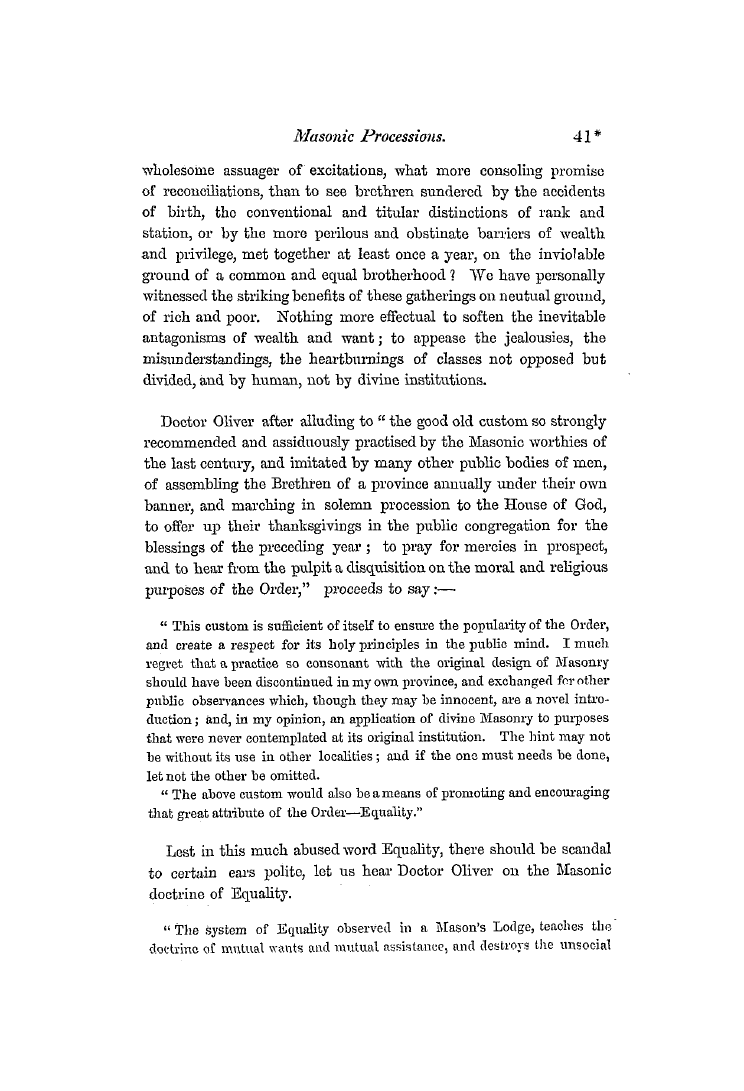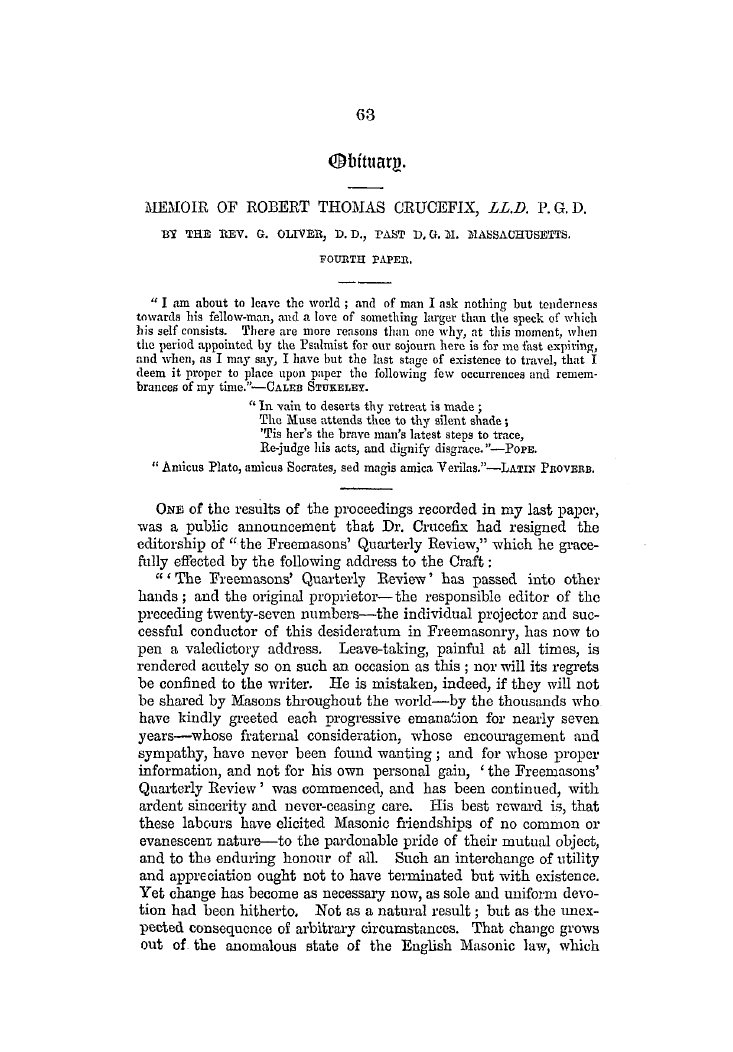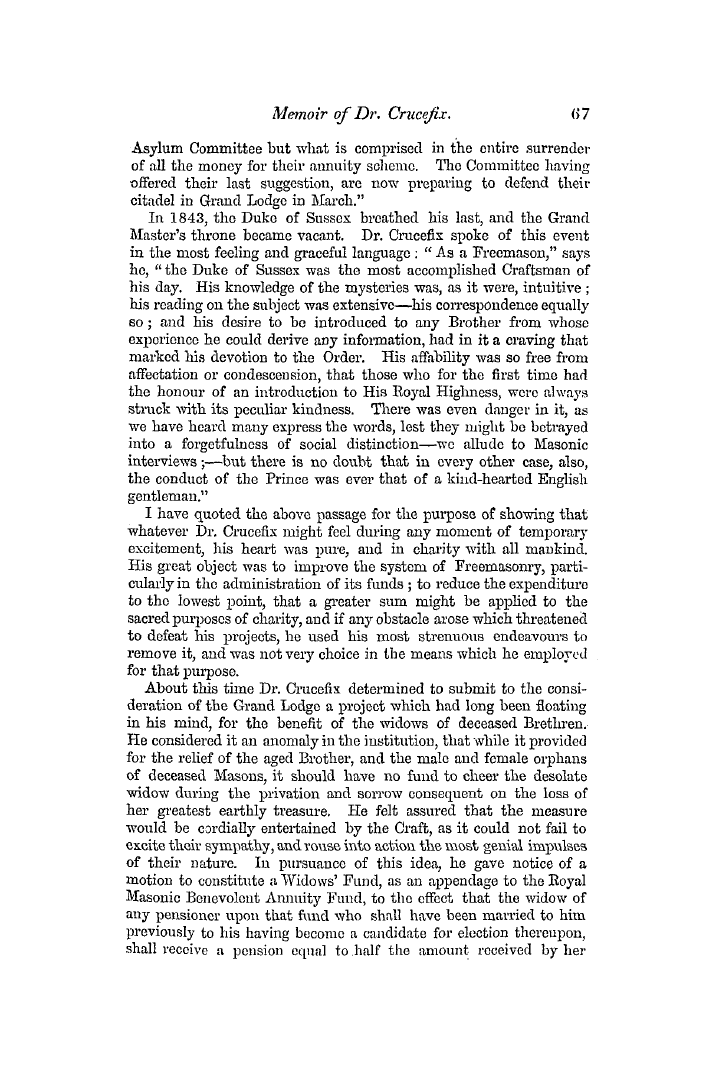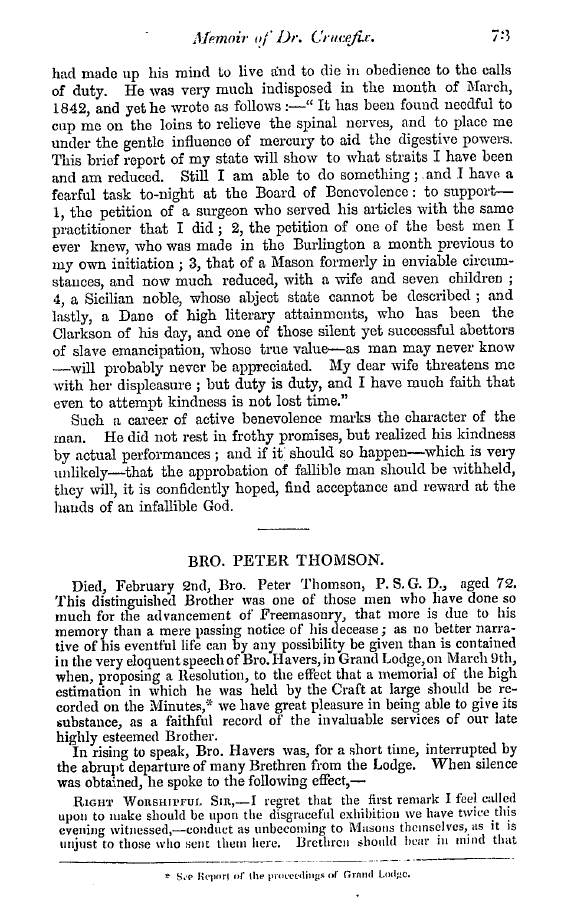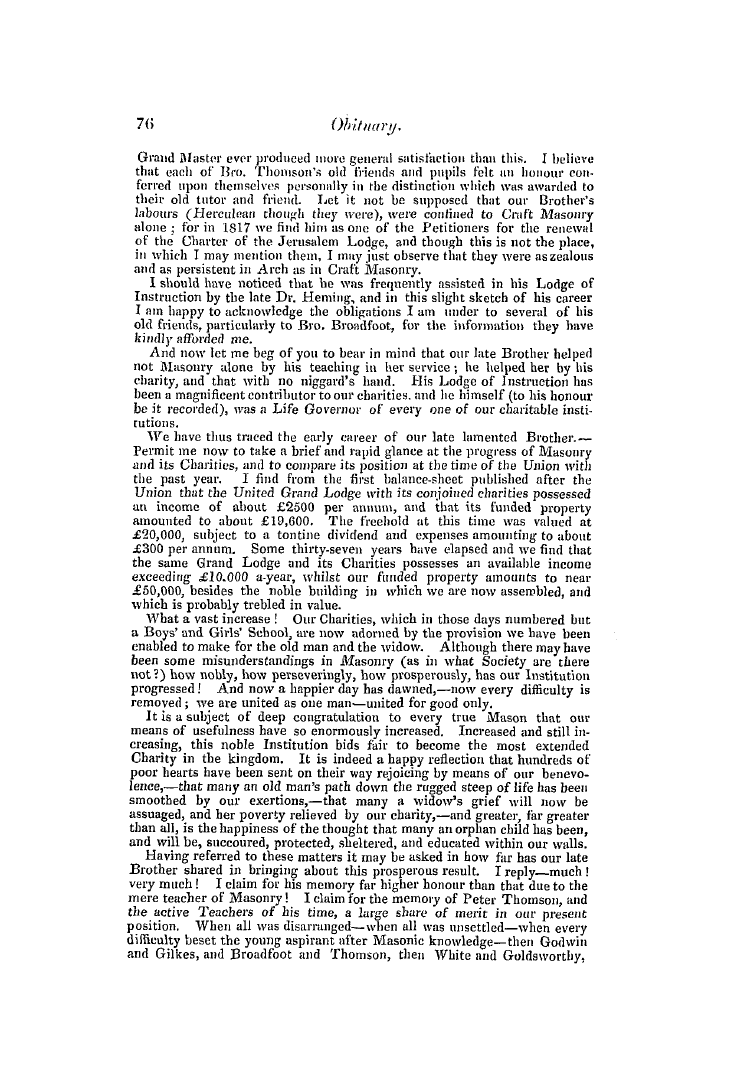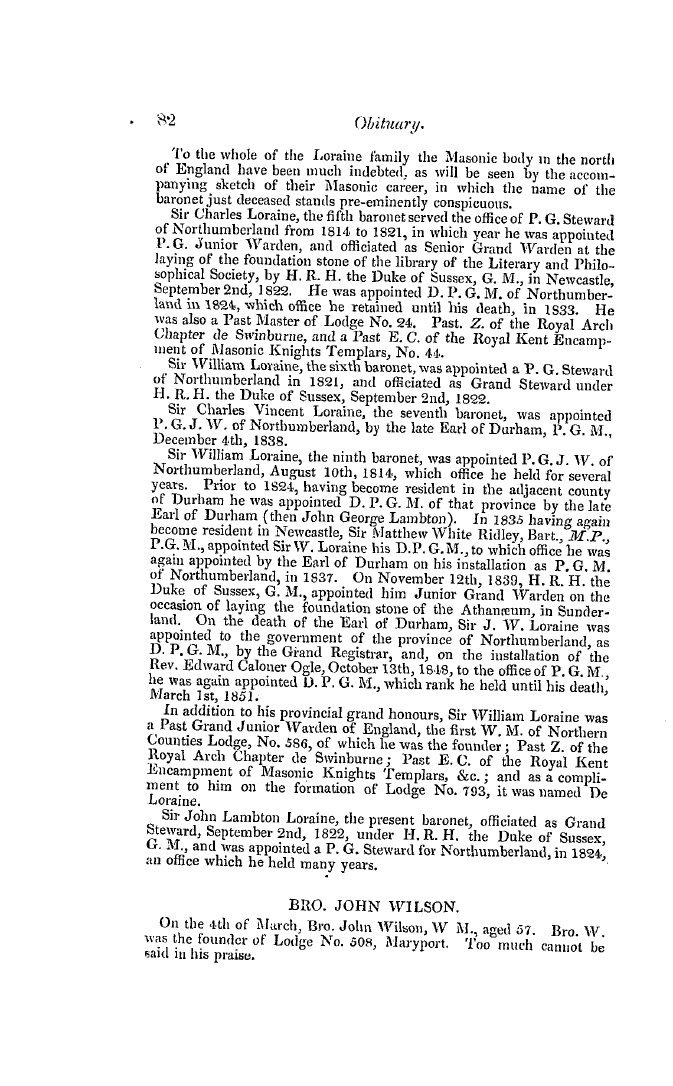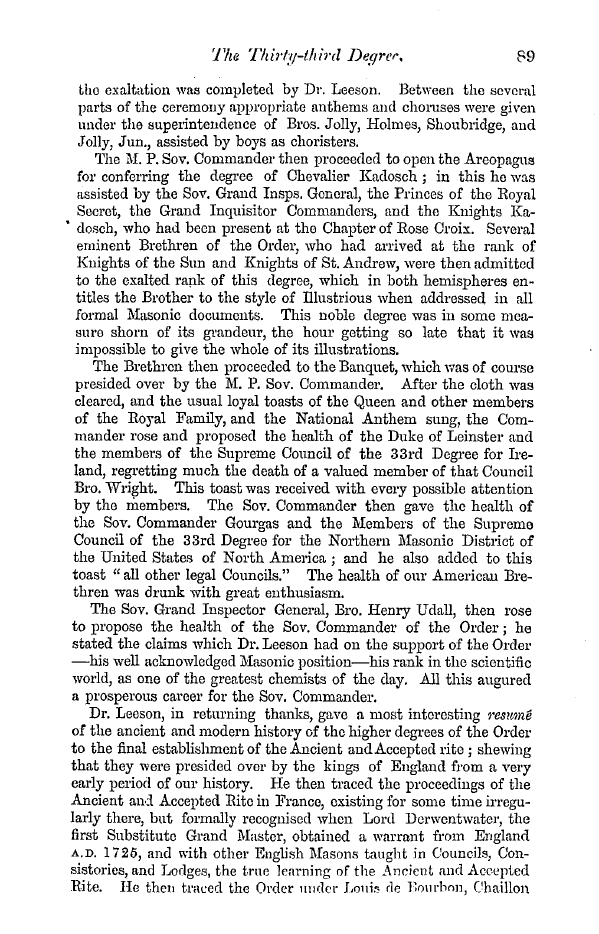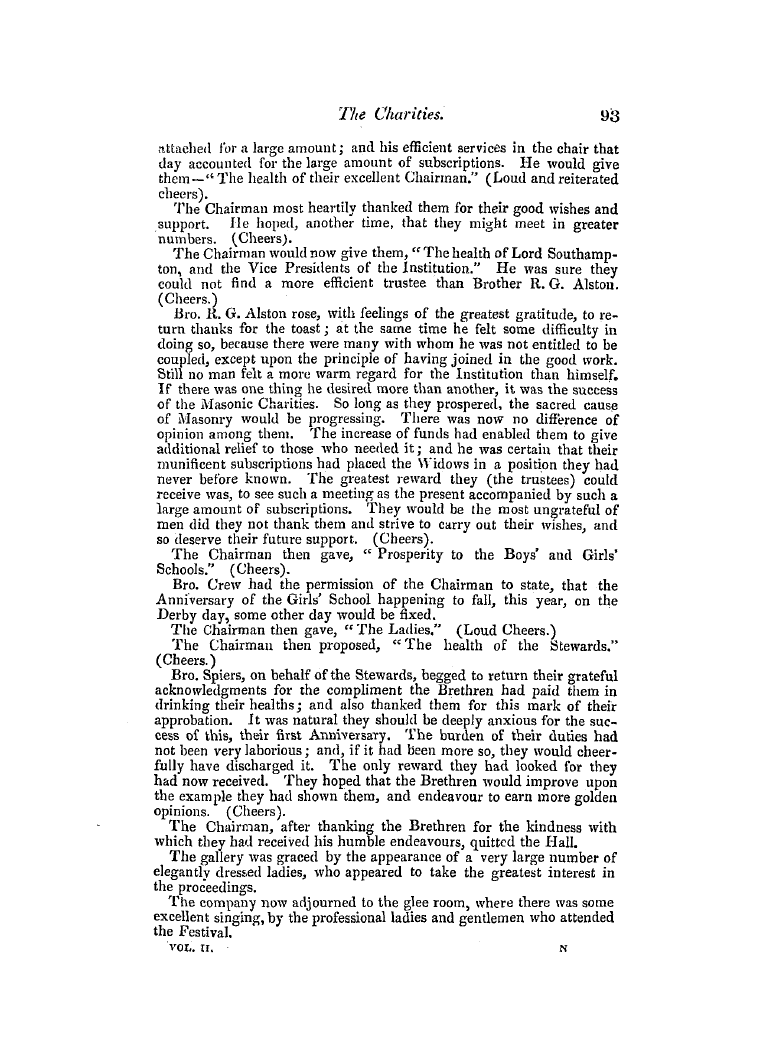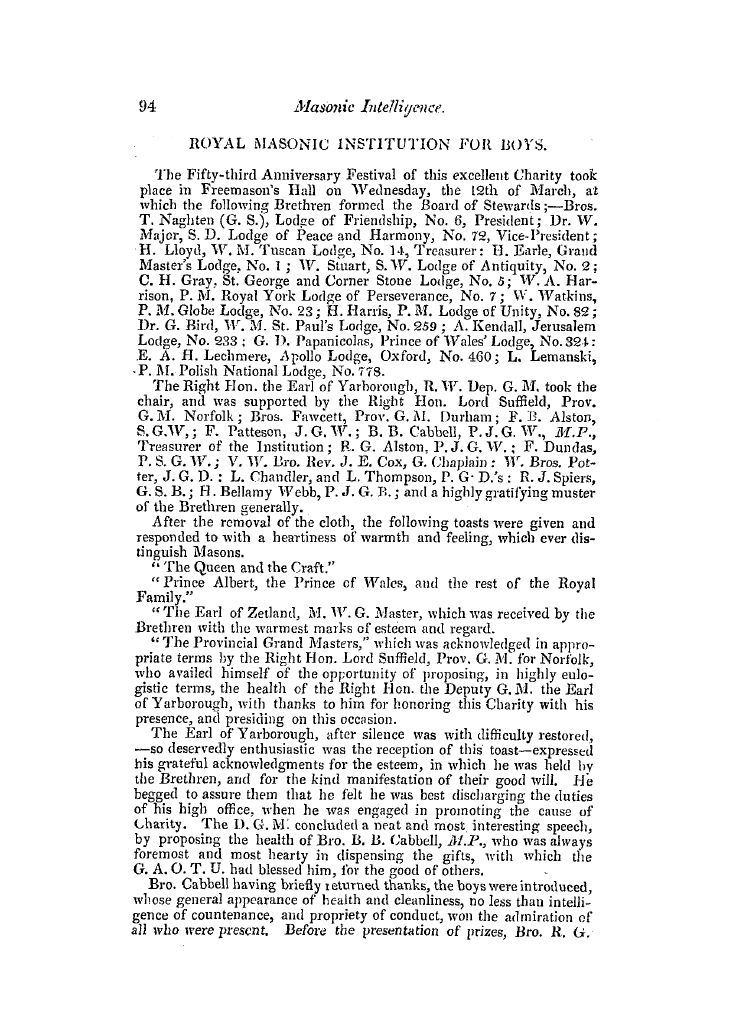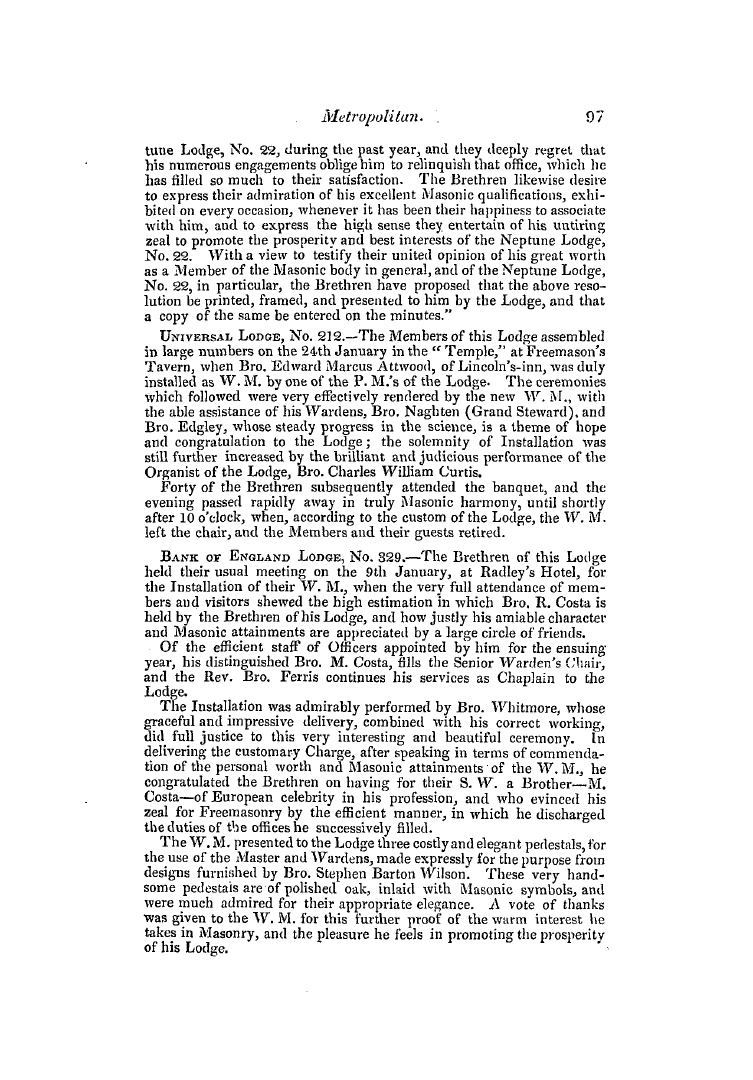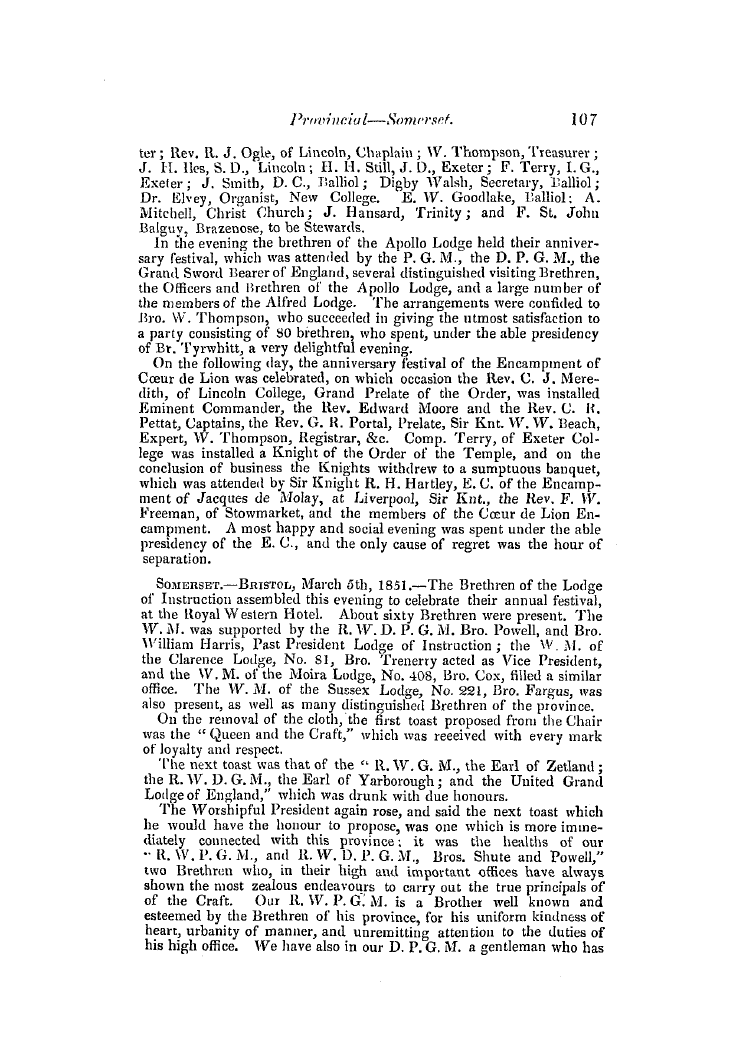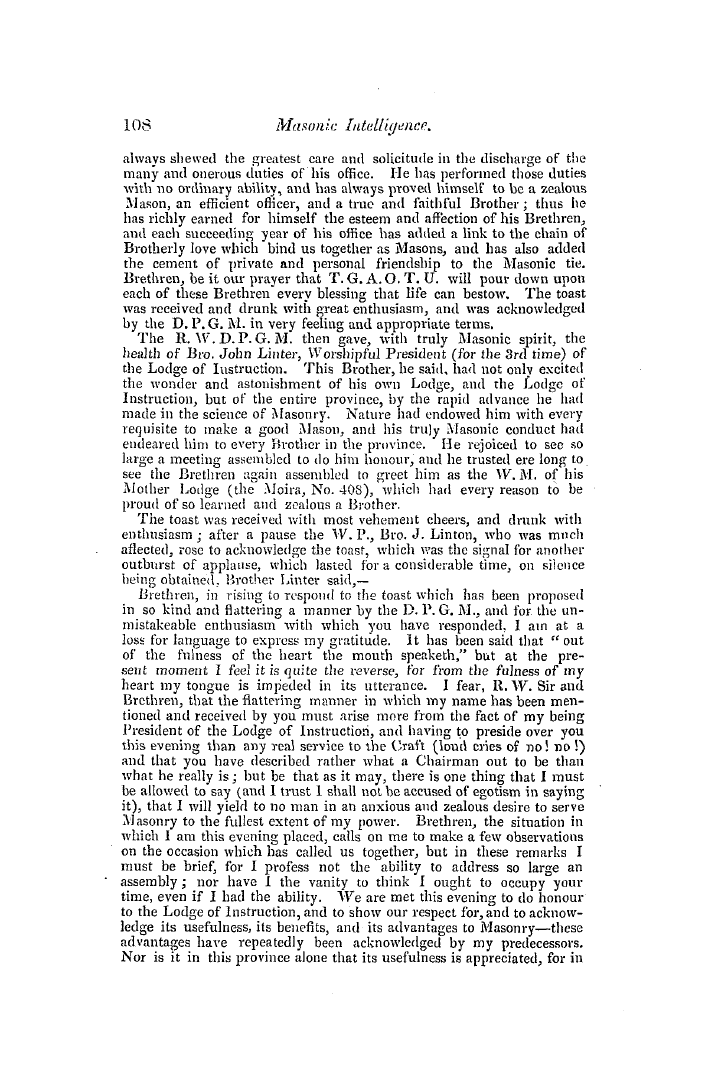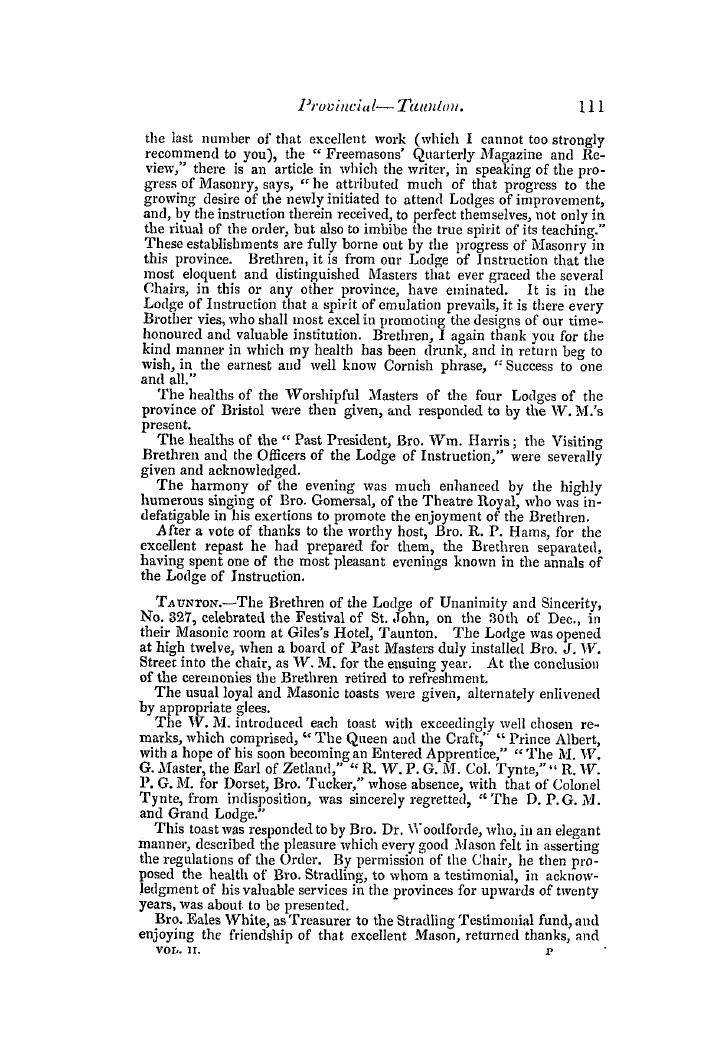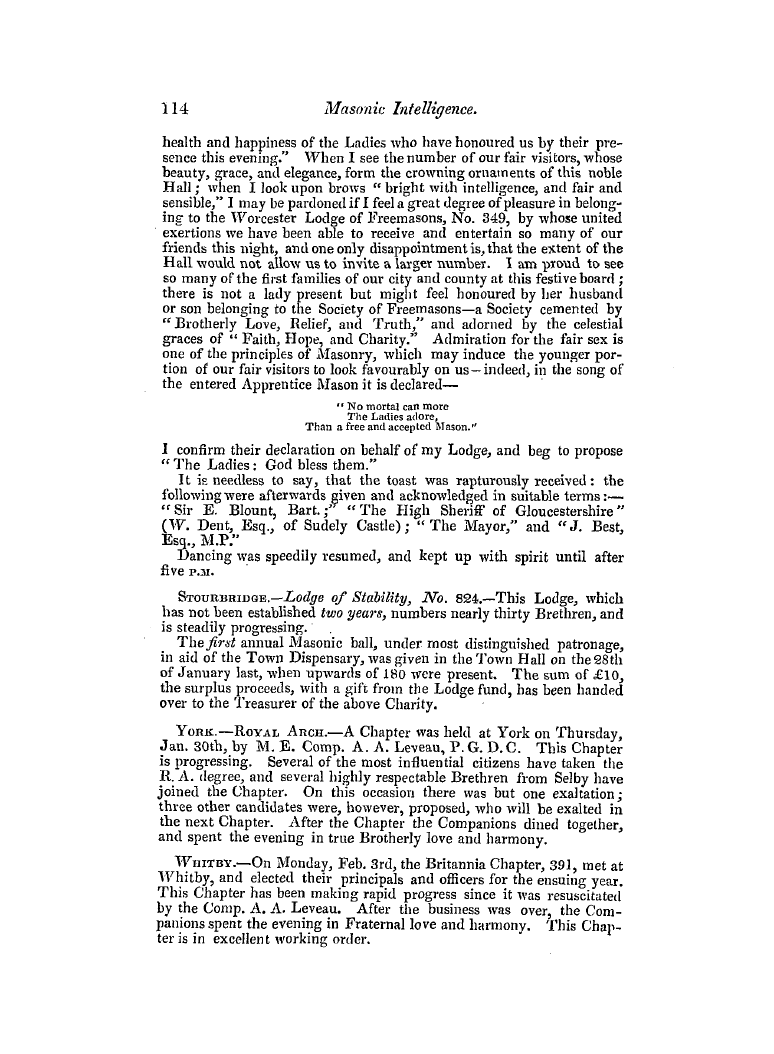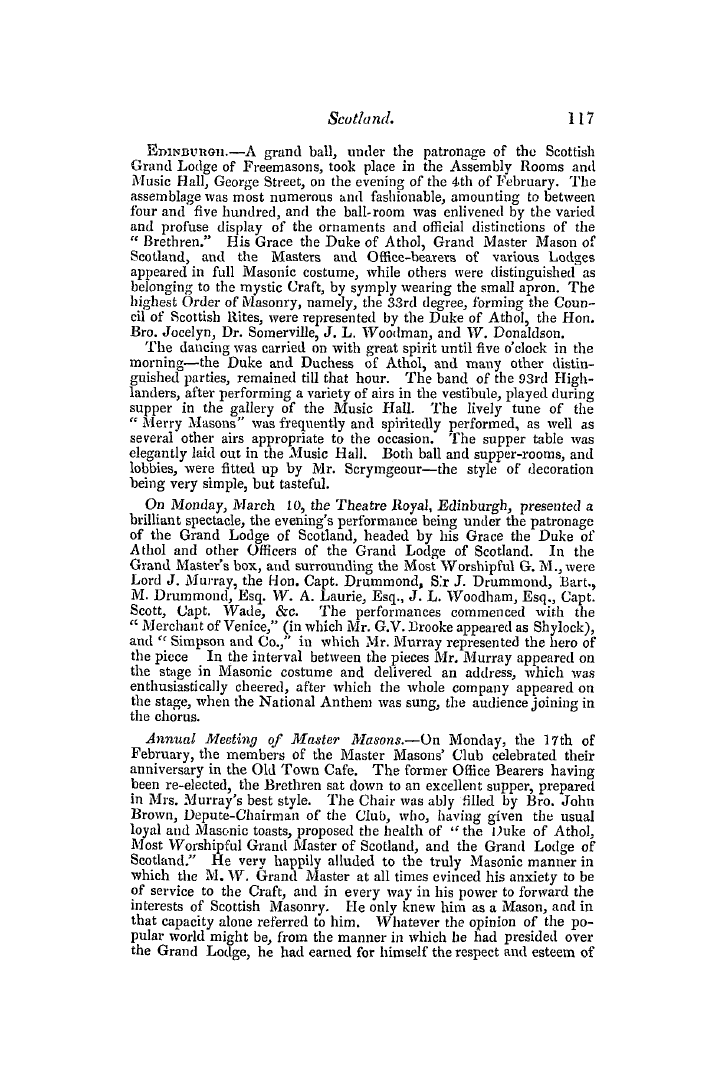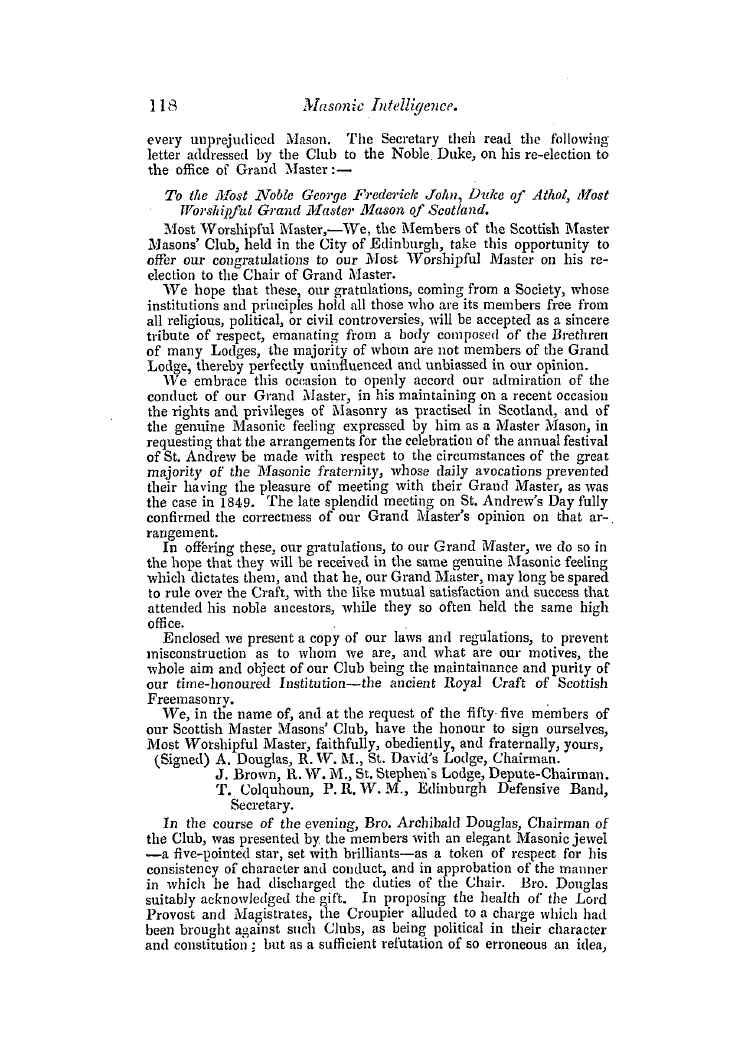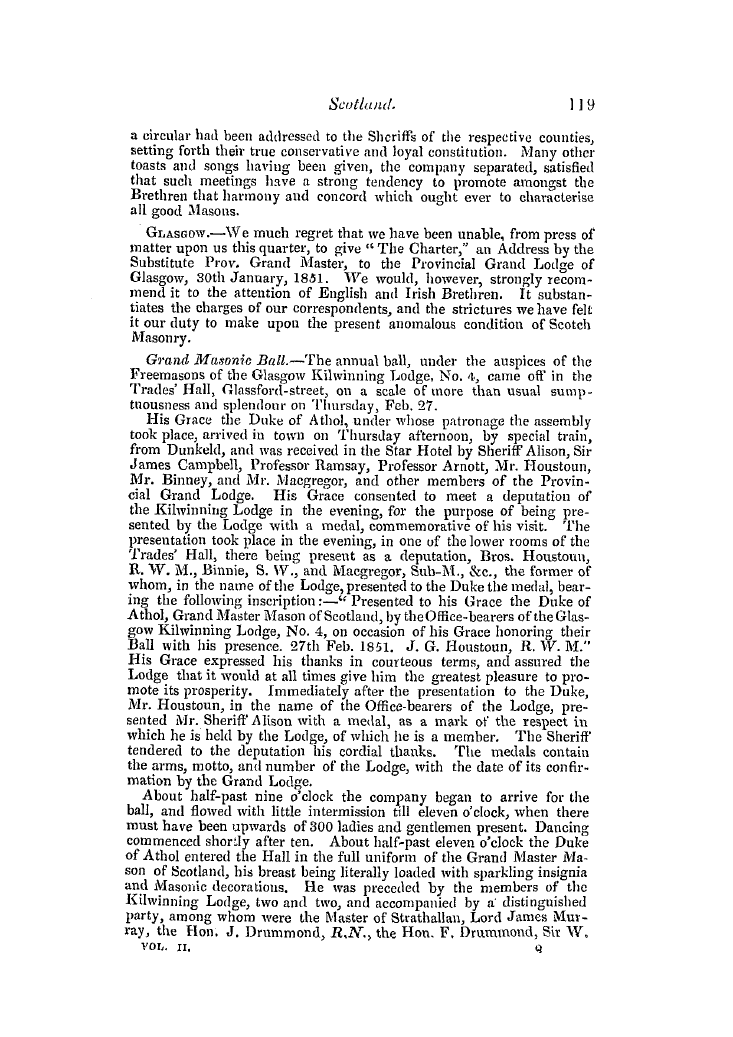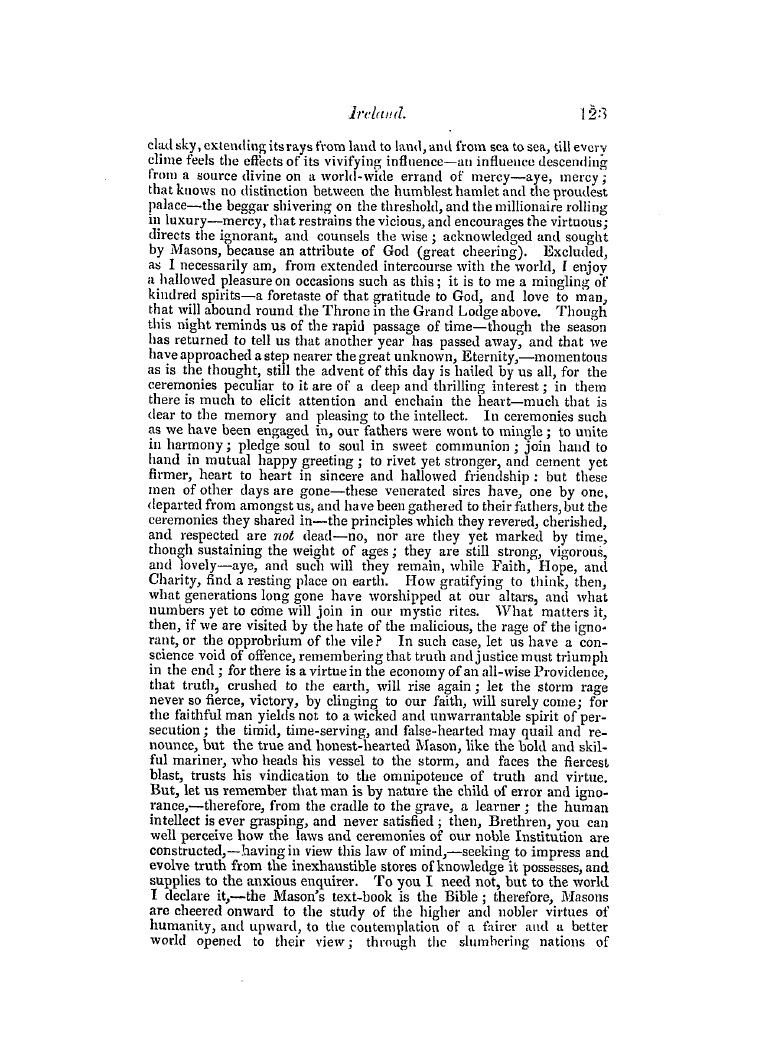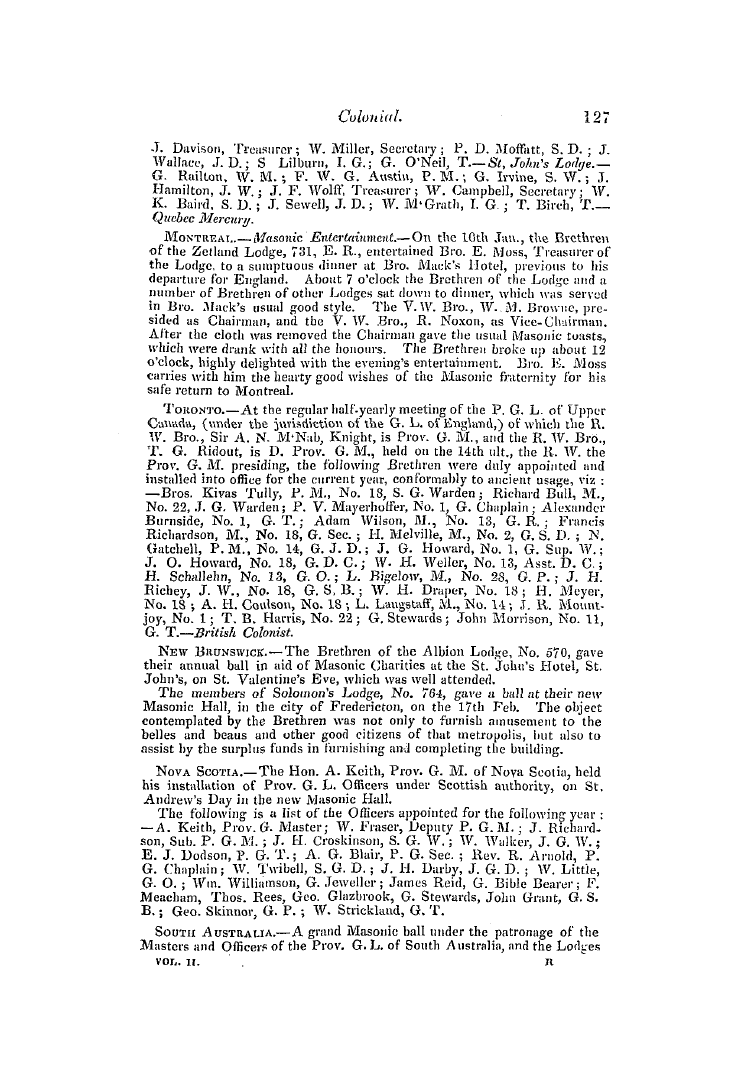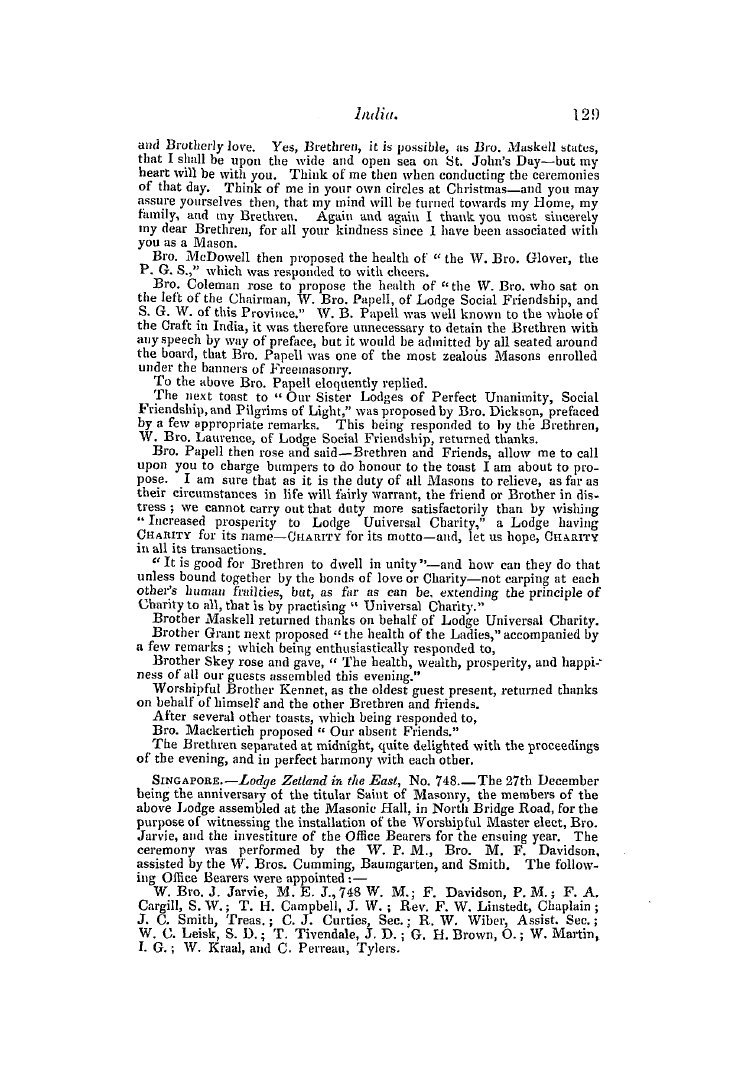-
Articles/Ads
Article NOTES UPON FUNERAL SOLEMNITIES. ← Page 2 of 6 →
Note: This text has been automatically extracted via Optical Character Recognition (OCR) software.
Notes Upon Funeral Solemnities.
of deceased members of thc Order : but wc cannot but hope that some intelligent Brother may take the hint , and make a subject so interesting matter for a separate article . In our last paper we alluded , more particularly , to the obsequies of Abbat Islippe , as giving a good idea of the ceremonials attending the funeral of those distinguished b
y rank or attainments in the middle ages ; and , as this instance is similar in every respect to cotemporary accounts of occurrences of the same nature , we venture to give a more particular description of it . His corpse was first chested and cered , and so remained in a large parlour hung with black clothgarnished with
, escocheons of his arms , and those of the monastery of Westminster . The corpse was covered with a rich pall of cloth of gold of tissue , and four great tapers were placed about it , burning day and night with daily masses and nightly
watches until the 16 th of May , when it was conveyed into the monastery of Westminster in the following manner : 1 st . Two conductors with black staves , then the cross , then a number of priests , friars , and monks , and other religious persons ; after whom came the Abbot of Bury in pontificalibus . The corpse was borne by six of his yeomen , in
black coats . Two branches of white wax were borne by two clerks in their surplices , and before the corpse were twenty-four poor men in gowns and hoods , bearing twentyfour torches . Then came the chief mourner alone , followed by others , two and two , habited in long gowns and hoods . At the entry of the monastery , the Abbot of Bury , with
his assistant priests , received the corpse , and so proceeded to the choir , where it was set under a goodly herse , with many lights , and a majesty and vallence . Machym , a herald painter , who writes from 1550 to 1563 , mentions a " fayrc majesty ancl vallence" gilded and fringed , as an adjunct to the hearse , which may be supposed to have been a canopy , or termination of the whole . The corpse placed under the herse , the Dirige * began ,
Note: This text has been automatically extracted via Optical Character Recognition (OCR) software.
Notes Upon Funeral Solemnities.
of deceased members of thc Order : but wc cannot but hope that some intelligent Brother may take the hint , and make a subject so interesting matter for a separate article . In our last paper we alluded , more particularly , to the obsequies of Abbat Islippe , as giving a good idea of the ceremonials attending the funeral of those distinguished b
y rank or attainments in the middle ages ; and , as this instance is similar in every respect to cotemporary accounts of occurrences of the same nature , we venture to give a more particular description of it . His corpse was first chested and cered , and so remained in a large parlour hung with black clothgarnished with
, escocheons of his arms , and those of the monastery of Westminster . The corpse was covered with a rich pall of cloth of gold of tissue , and four great tapers were placed about it , burning day and night with daily masses and nightly
watches until the 16 th of May , when it was conveyed into the monastery of Westminster in the following manner : 1 st . Two conductors with black staves , then the cross , then a number of priests , friars , and monks , and other religious persons ; after whom came the Abbot of Bury in pontificalibus . The corpse was borne by six of his yeomen , in
black coats . Two branches of white wax were borne by two clerks in their surplices , and before the corpse were twenty-four poor men in gowns and hoods , bearing twentyfour torches . Then came the chief mourner alone , followed by others , two and two , habited in long gowns and hoods . At the entry of the monastery , the Abbot of Bury , with
his assistant priests , received the corpse , and so proceeded to the choir , where it was set under a goodly herse , with many lights , and a majesty and vallence . Machym , a herald painter , who writes from 1550 to 1563 , mentions a " fayrc majesty ancl vallence" gilded and fringed , as an adjunct to the hearse , which may be supposed to have been a canopy , or termination of the whole . The corpse placed under the herse , the Dirige * began ,




























































